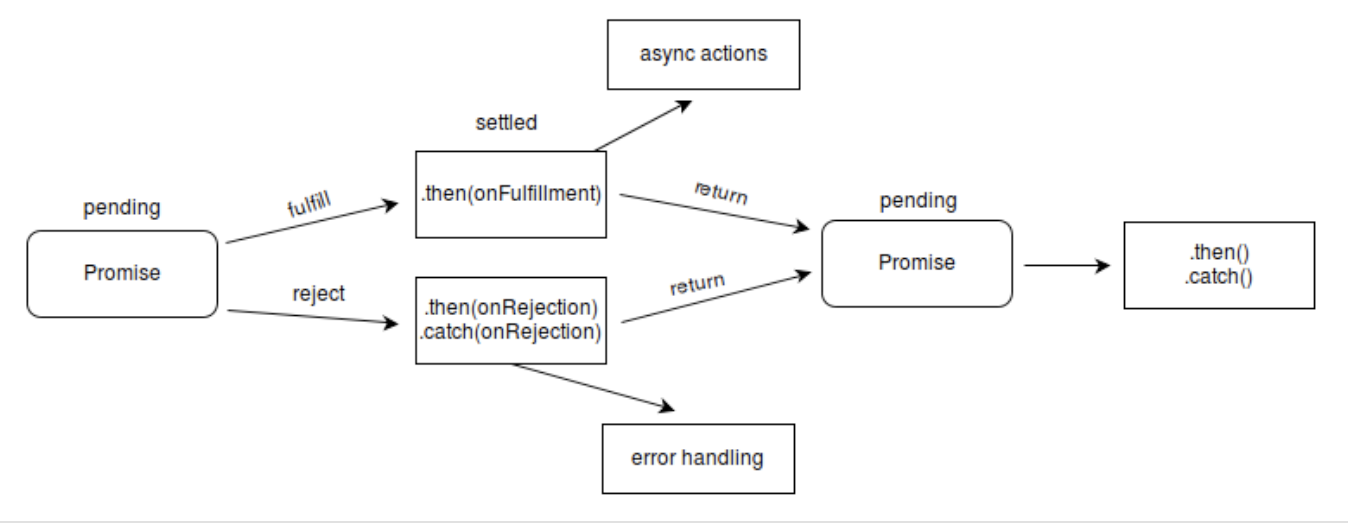js声明变量的三种方式
我们通常使用 var let 和const来声明js的变量,但是这三者有什么区别呢?
- var的变量可以是全局的或者函数作用域,而let和const只能是块级作用域
- var和let可以重新赋值,而const是不允许重新赋值的,
- var可以在一个作用域内重新声明,let和const只能声明一次
- 一般来说,建议使用 let 和 const 来声明变量,因为它们提供了更严格的作用域控制和可变性。var 仍然可以在某些情况下使用,例如在需要全局作用域的变量时。
js的异步编程
用过ajax请求的人应该都知道有这么一个参数async,即是否异步,如果是异步,则设置为true,如果是非异步,则为false,我们举例看一下
<script src="https://code.jquery.com/jquery-3.1.1.min.js"></script>
<script>console.log(1);$.ajax({url: "./a.json",type: "post",dataType: "text",async: true,//异步data: {},success: function(data){console.log(2);}});console.log(3);
</script>
- 结果返回的是1 3 2 ,即js并没有等待ajax的结果,而是继续往下执行代码,Ajax的返回结果是通过success回调函数调用的。如果把
async设置为false,则结果是1 2 3

回调地狱
那么这个时候来了一个需求,要求根据第一个Ajax的请求结果作为条件来发起第二个Ajax请求,然后以第二个Ajax的请求结果作为条件发送第三个Ajax请求,那么形式可能就是这样的
<script>$.ajax({url: "./a.json",type: "post",dataType: "text",async: true,success: function(data){$.ajax({url: "./a.json",type: "post",dataType: "text",async: true,success: function(data){$.ajax({url: "./a.json",type: "post",dataType: "text",async: true,success: function(data){}})}})}})
</script>
一层层的嵌套,这就是回调地狱。这即不好看,也不好写,逻辑更是混乱。那么怎么办呢?至少作为后端,我们取使用orm取数据的时候都会用到一种链式操作,比如Model(user).Where("email = ?",query.Email).Where("password = ?",utils.Md5Encode(query.PassWord)).First(user)。我们永远可以在之前的操作结果上加条件。那么js有没有这种写法呢?有的,这个东西就叫做promise
promise
Promise是ES6新增的一个类,可以翻译为承诺(许诺、契约等),promise允许你将异步操作链接在一起,并以同步的方式处理它们的结果。
既然是一个类,就会有构造函数,promise的构造函数叫executor,我们可以这样创建一个promise
const myPromise = new Promise((resolve, reject) => {// 这里是一些异步操作if (success) {resolve(result);} else {reject(error);}
});
处理promise
有两种处理promise的方法
- .then():当 Promise 成功完成时调用。它接受一个回调函数,该函数将接收 Promise 的结果作为参数。
- .catch():当 Promise 失败时调用。它接受一个回调函数,该函数将接收 Promise 的错误作为参数。注意,如果.then里面处理的err则catch无法再次捕捉
注意,.then() 和 .catch() 回调总是返回一个新的 Promise,这使得可以链接 Promise。
var promise = new Promise(function(resolve, reject) {if (/* 异步操作成功 */){resolve(value);} else {reject(error);}
});
promise.then(function(value) {// 如果调用了resolve方法,执行此函数
}, function(value) {// 如果调用了reject方法,执行此函数
});演示
<script>var getJSON = function (url) {//创建一个promise并返回return new Promise(function (resolve, reject) {//进行一些异步操作const client = new XMLHttpRequest();client.open("GET", url);client.onreadystatechange = handler;client.responseType = "json";client.setRequestHeader("Accept", "application/json");client.send();function handler() {if (this.readyState === 4) {if (this.status === 200) {//如果成功则执行resolveresolve(this.response);} else {//如果失败则执行resolvereject(new Error(this.statusText));}}};});};getJSON("./a.json").then(function(json) {console.log(json);}, function(error) {console.error('出错了', error);});
</script>
链式调用
Promise 可以链接在一起,形成一个链式调用:
myPromise1.then((result1) => {return myPromise2(result1);}).then((result2) => {// 处理最终结果}).catch((error) => {// 处理错误});
promise的状态
promise实例的状态有三种
- pending: 初始状态,未执行
- fulfilled: 操作完成
- rejected: 操作失败
调用流程图

一道面试题
下面这道题目,输出结果是多少?
console.log(1);new Promise(function (resolve, reject){console.log(2);reject(true);console.log(3);window.setTimeout(function (){console.log(4);resolve(false);}, 0);}).then(function(){console.log(5);}, function(){console.log(6);});console.log(7);
- 接下来我们解析一下上面的代码,console.log(1)执行输出1,构造promise对象要先执行executor,输出console.log(2);异步调用reject(true);继续输出console.log(3);setTimeout也是异步调用,被放到事件队列。promise对象创建完毕,继续console.log(7);reject事件发起回调,执行console.log(6);setTimeout发起回调,执行 console.log(4);,由于reject之后 promise的状态无法再次被修改,resolve(false)不会改变状态,所以不执行,最终执行结果就是 1 2 3 7 6 4
fetch
如果你了解xhr,那么你就很容易明白fetch,因为fetch就是js原生支持的,xhr的替代方案。Fetch被称为下一代 Ajax 技术,采用 Promise 的方式来处理数据。它是一种简洁明了的API,比 XMLHttpRequest 更加简单易用。
fetch的初试
我们来简单实现一个fetch的demo,我们前面说了,是js原生的api,无需引入其他包
let url="./a.json"fetch(url).then((res)=>{console.log(res);}).catch((err)=>{console.log(err);})
- 我们查看输出,请求的返回值是一个json,但是这个fetch返回的response没有我们的数据啊,为什么?这我们就要说到了关注分离原则

关注分离
关注分离是一种软件设计原则,旨在将不同的功能模块分离开来,使其各自专注于特定的任务。在 Web 开发中,这意味着将输入、输出和状态跟踪等不同方面的功能分离开来,以便更好地组织代码并提高可维护性。
比如咱们上面举例的这个fetch,response并不是说我获取到了数据,重点在于我链接服务成功了,服务器给我响应了,不管是404还是500还是200,只要服务器响应我了,我就认为我任务完成了。

那么我们怎么获取数据呢?那我们就要在这个基础上,继续获取promise里面的内容
let url="./a.json"fetch(url).then((res)=>{console.log(res);//把结果作为promise返回return res.json()}).then((json)=>{//处理上一个返回的promiseconsole.log(json);}).catch((err)=>{console.log(err);})
一个完整的fetch请求
一个完整的fetch,在url后面,其实还可以跟一个config对象,config对象属性如下,可以配置请求方式,data,headers等信息
{/** A BodyInit object or null to set request's body. */body?: BodyInit | null;/** A string indicating how the request will interact with the browser's cache to set request's cache. */cache?: RequestCache;/** A string indicating whether credentials will be sent with the request always, never, or only when sent to a same-origin URL. Sets request's credentials. */credentials?: RequestCredentials;/** A Headers object, an object literal, or an array of two-item arrays to set request's headers. */headers?: HeadersInit;/** A cryptographic hash of the resource to be fetched by request. Sets request's integrity. */integrity?: string;/** A boolean to set request's keepalive. */keepalive?: boolean;/** A string to set request's method. */method?: string;/** A string to indicate whether the request will use CORS, or will be restricted to same-origin URLs. Sets request's mode. */mode?: RequestMode;/** A string indicating whether request follows redirects, results in an error upon encountering a redirect, or returns the redirect (in an opaque fashion). Sets request's redirect. */redirect?: RequestRedirect;/** A string whose value is a same-origin URL, "about:client", or the empty string, to set request's referrer. */referrer?: string;/** A referrer policy to set request's referrerPolicy. */referrerPolicy?: ReferrerPolicy;/** An AbortSignal to set request's signal. */signal?: AbortSignal | null;/** Can only be null. Used to disassociate request from any Window. */window?: null;
}
async 和await
上面例子中,我们通过.then返回的promise再次.then ,这明显是有些繁琐的。那么怎么办?我们这里就可以用到async 和await,
let url = "./a.json"async function getJson() {try {let res = await fetch(url);if (res.status !== 200) {throw new Error("请求失败")}const json = await res.json();console.log(json);} catch (e) {console.log(e);}}getJson()
那么这里面的async和await是什么意思呢?
- async 关键字提供了一种更简单的方法来处理基于异步 Promise 的代码。在一个函数的开头添加 async,就可以使其成为一个异步函数。注意,async 函数总是返回一个 Promise 对象。
- 在异步函数中,我们可以在调用一个返回 Promise 的函数之前使用 await 关键字。这使得代码在该点上等待,直到 Promise 被完成,这时 Promise 的响应被当作返回值,或者被拒绝的响应被作为错误抛出。这样我们就能够编写像同步代码一样的异步函数,注意,只能在 async 函数内使用 await 关键字,用于等待 Promise 对象 resolved 后返回结果。
- await 会暂停 async 函数的执行,等待 Promise 返回结果,然后恢复函数执行并返回数据。
- await 表达式如果抛出错误,会被捕获并返回 Promise 对象的 reject 状态。
promise的并行调用和链式调用示例
<script>let url1 = "./a1.json"let url2 = "./a2.json"let url3 = "./a3.json"async function getJson1(n) {console.log(n);try {let res = await fetch(url1);if (res.status !== 200) {throw new Error("请求失败")}return res.json();} catch (e) {console.log(e);}}async function getJson2(n) {console.log(n);try {let res = await fetch(url2);if (res.status !== 200) {throw new Error("请求失败")}return res.json();} catch (e) {console.log(e);}}async function getJson3(n) {console.log(n);try {let res = await fetch(url3);if (res.status !== 200) {throw new Error("请求失败")}return res.json();} catch (e) {console.log(e);}}//并行执行多个异步操作async function getAll(){//等待所有执行完毕let res= await Promise.all([getJson1(1), getJson2(2), getJson3(3)])let total=res[0].age+res[1].age+res[2].ageconsole.log(total);return total;}getAll()//链式调用 根据前面的结果调用下一个async function chain(){let init=0let res1=await getJson1(init);let res2=await getJson2(res1.age);let res3=await getJson3(res2.age);console.log(res3.age);}chain()</script>

和列表(List)性能比较)











 本地图片展示,部署后加载失败解决)





